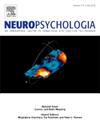幻指伸展与体感反应。
IF 2
3区 心理学
Q3 BEHAVIORAL SCIENCES
引用次数: 0
摘要
通过增强现实技术实现的调整幻觉,可以通过拉伸或收缩操作来调整身体部位的大小。这些调整大小的错觉已经在视觉活动、纯视觉和视觉听觉表现中进行了研究。然而,这些调整大小错觉的神经基础仍然不清楚。本研究试图通过躯体感觉稳态诱发电位(ssep)和主观自我报告问卷来了解这些幻觉背后的神经机制,以增强对在调整幻觉过程中驱动主观体现的认识。由于这些幻觉已被证明对慢性疼痛患者具有镇痛作用,本研究也旨在为未来慢性疼痛样本的研究提供经验基础。验证性分析(N = 46)表明,非错觉和多感觉错觉条件下的主观体验存在显著差异,而测量感兴趣电极(F1和FC1)对调整手指26Hz刺激的SSEP反应的脑电图(EEG)数据显示,条件没有显著影响。然而,进一步的探索性非参数SSEP分析揭示了条件的显著影响,与非错觉条件相比,错觉条件下的振幅减小,但探索性事后测试中没有显著差异。虽然验证性研究结果表明,对于没有慢性疼痛的参与者,调整幻觉大小对SSEP振幅没有明显的影响,但探索性研究结果可以解释为错觉拉伸导致的神经表征的潜在“锐化”。因此,这些发现为研究慢性疼痛人群的可比主观和稳态错觉反应提供了基础,慢性疼痛人群被认为对其受影响的身体部位有更分散的神经表征。本文章由计算机程序翻译,如有差异,请以英文原文为准。
Illusory finger stretching and somatosensory responses
Resizing illusions, delivered using augmented reality, resize a body part through stretching or shrinking manipulations. These resizing illusions have been investigated in visuotactile, visual-only, and visuo-auditory presentations. However, the neural underpinnings of these resizing illusions remain undefined. This study sought to understand the neural mechanisms behind these illusions by using somatosensory steady state evoked potentials (SSEPs) in addition to subjective self-report questionnaires, to enhance knowledge of what drives the subjective embodiment during resizing illusions. Since these Illusions have been shown to provide analgesic effects for individuals with chronic pain conditions, this study also aimed to provide an empirical basis for future investigations in chronic pain samples. Confirmatory analyses (N = 46) demonstrated significant differences in subjective experience between non-illusion and multisensory illusion conditions, while electroencephalography (EEG) data measuring SSEP response across electrodes of interest (F1 & FC1) to 26Hz stimulation of the resized digit showed no significant effects of condition. However, further exploratory non-parametric SSEP analyses revealed a significant effect of condition, with reduced amplitudes in illusion conditions compared to non-illusion conditions, but no significant differences in exploratory post hoc tests. While confirmatory findings demonstrated no clear effect of resizing illusions on SSEP amplitudes for participants without chronic pain, exploratory findings could be interpreted as a potential “sharpening” of neural representations resulting from illusory stretching. These findings therefore provide a basis for investigations of comparable subjective and steady state illusion responses in a chronic pain population, who are thought to have more diffuse neural representations of their affected body parts.
求助全文
通过发布文献求助,成功后即可免费获取论文全文。
去求助
来源期刊

Neuropsychologia
医学-行为科学
CiteScore
5.10
自引率
3.80%
发文量
228
审稿时长
4 months
期刊介绍:
Neuropsychologia is an international interdisciplinary journal devoted to experimental and theoretical contributions that advance understanding of human cognition and behavior from a neuroscience perspective. The journal will consider for publication studies that link brain function with cognitive processes, including attention and awareness, action and motor control, executive functions and cognitive control, memory, language, and emotion and social cognition.
 求助内容:
求助内容: 应助结果提醒方式:
应助结果提醒方式:


